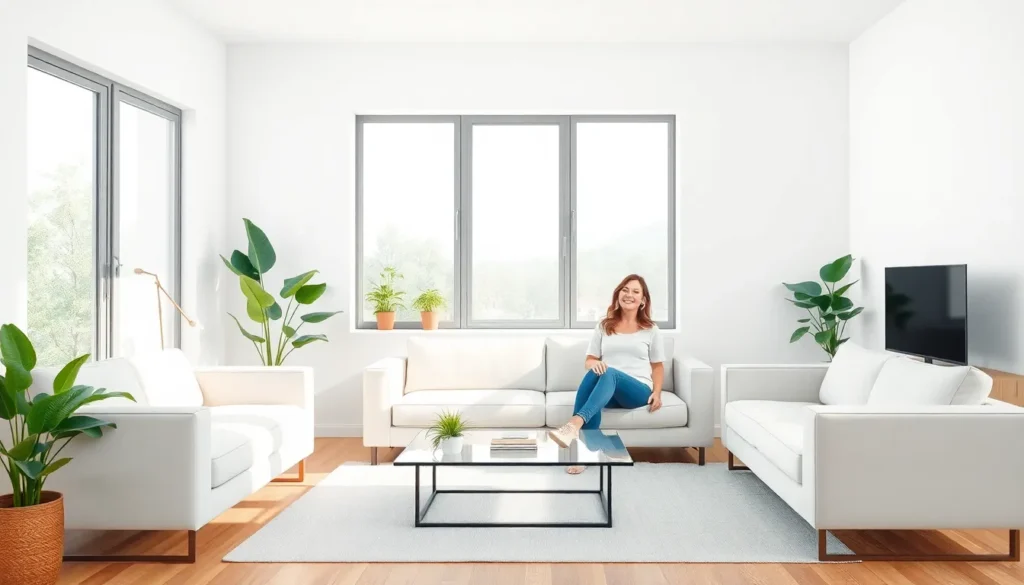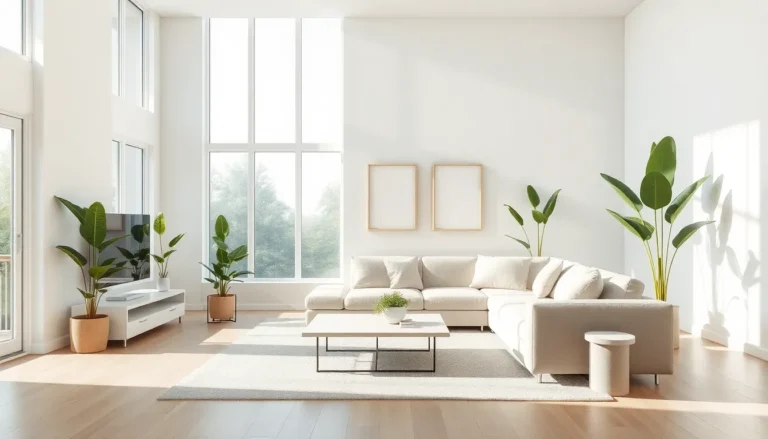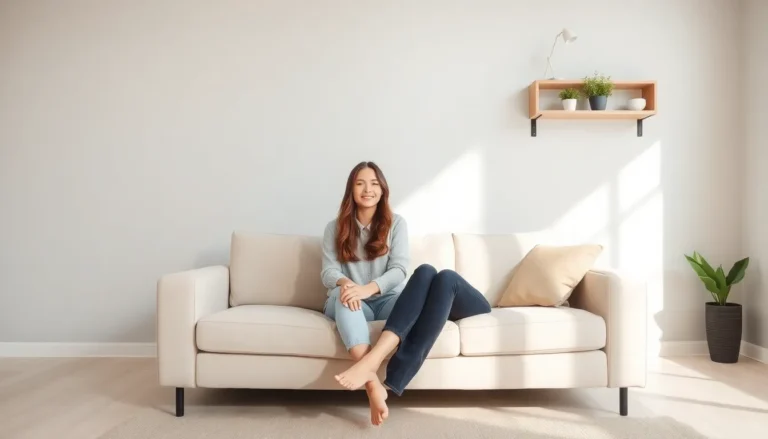Table of Contents
ToggleImagine stepping into a living room that feels like a serene oasis rather than a chaotic jungle of mismatched furniture and knickknacks. Minimalist apartment living rooms are all about creating a space that’s both functional and stylish, proving that less really can be more. With just a few carefully chosen pieces, anyone can transform their cramped quarters into a chic retreat that even Marie Kondo would applaud.
What Is a Minimalist Apartment Living Room?
A minimalist apartment living room focuses on simplicity and functionality. Space showcases only essential items, eliminating clutter. Each chosen piece complements the overall aesthetic without overwhelming the area. Clean lines and neutral colors often dominate the design, fostering a calm environment.
Furnishings typically include streamlined furniture that balances comfort and style. Sofas and chairs in solid colors maintain visual harmony. A coffee table serves a dual purpose, providing surface space while complementing other design elements. Accessories should remain minimal, with a few thoughtful accents enhancing the room without creating distraction.
Natural light plays a vital role in minimalist design. Large windows allow sunlight to illuminate the space, enhancing mood. Curtains or blinds often maintain a sleek appearance while offering light control. Plants introduce a touch of nature, adding life without cluttering the area.
Storage solutions are essential for keeping a minimalist apartment living room organized. Hidden compartments and multifunctional furniture help manage belongings effectively. Shelves and cabinetry can maintain a clean look while displaying select items, emphasizing design without excess.
Art and decor can also fit within a minimalist framework. One or two statement pieces provide visual interest without overwhelming the design. The overall goal remains to create a serene atmosphere that encourages relaxation and conversation, making the space inviting.
In essence, a minimalist apartment living room merges style with practicality, focusing on essential components that embody calmness and clarity. Design elements work synergistically, forming a sanctuary where distractions fade away, and simplicity shines.
Key Features of Minimalist Design
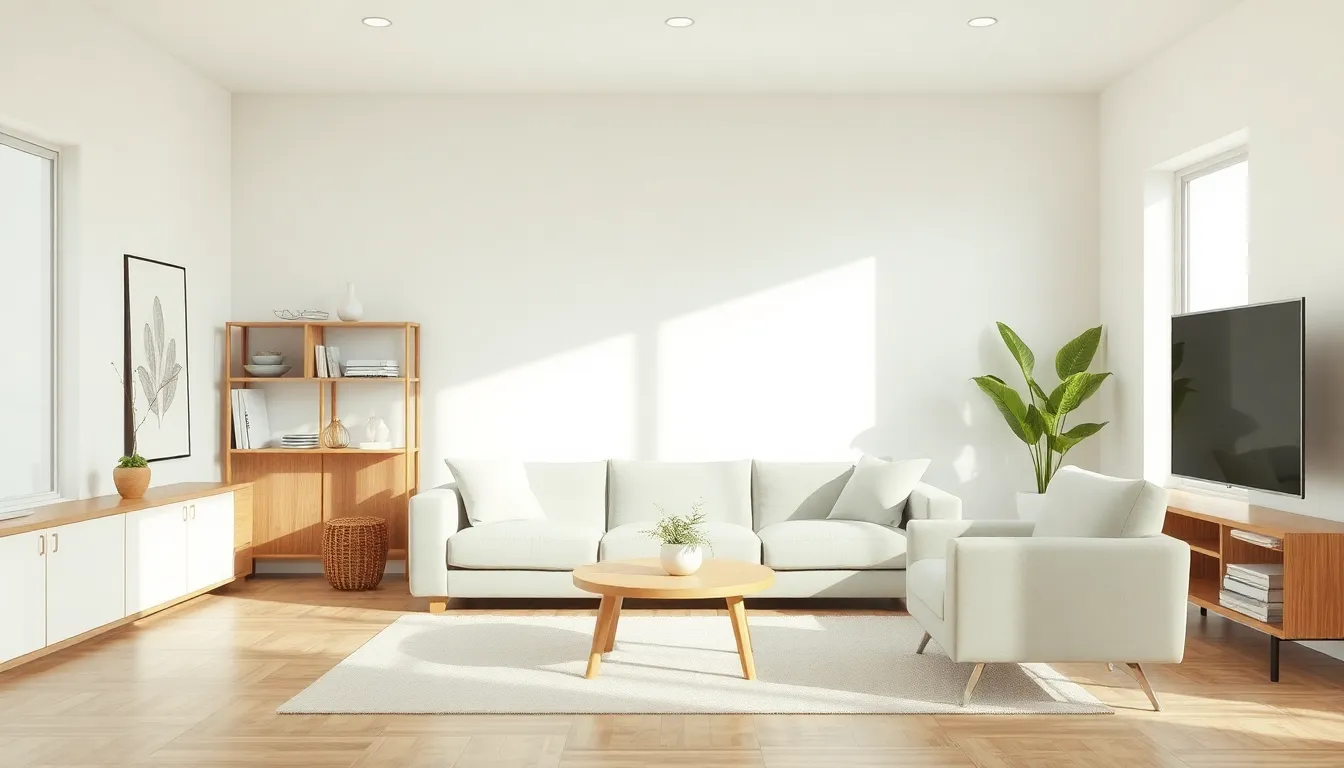
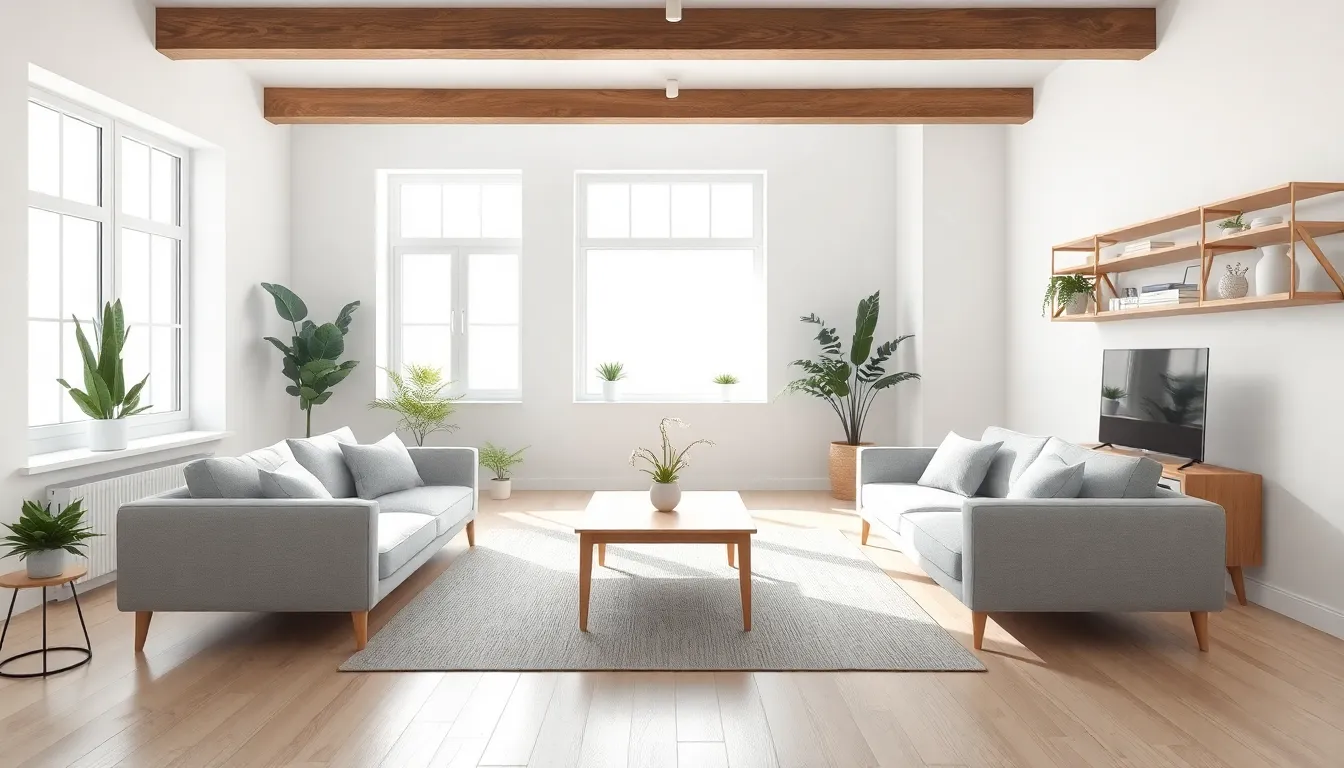
Minimalist design emphasizes simplicity and practicality, creating a space that feels open and organized. Key features define this aesthetic and contribute to its calming atmosphere.
Color Palette
Neutral colors dominate the minimalist color palette. Whites, grays, and beiges create a serene backdrop. Occasionally, muted tones add subtle warmth without overwhelming the senses. Color accents, if used, are sparse and carefully selected to maintain harmony. Light shades enhance natural light, making rooms appear larger and more inviting.
Furniture Selection
Furniture selection focuses on essential pieces with clean lines. Streamlined designs offer both comfort and style, avoiding ornate details. Sofas and chairs often feature simple upholstery, enhancing the room’s effortless feel. Additionally, multifunctional furniture maximizes utility without cluttering the space. Choosing fewer but higher-quality items elevates the overall aesthetic.
Decluttered Spaces
Decluttered spaces epitomize minimalist living rooms. Every item serves a purpose, contributing to the room’s functionality. Storage solutions, such as built-in shelves or hidden compartments, help hide away non-essential items. Open floor plans support an airy feel, promoting relaxation. Thoughtfully arranged furniture allows for easy movement, further enhancing the uncluttered experience.
Tips for Creating a Minimalist Apartment Living Room
A minimalist apartment living room emphasizes simplicity and functionality. Implementing a few key strategies can enhance the design while fostering a serene environment.
Choosing the Right Furniture
Selecting furniture with clean lines plays a central role in a minimalist living room. Prioritize essential pieces, focusing on comfort and style. Opt for neutral colors that blend seamlessly into the space. Avoid bulky items that can crowd the area. Instead, consider sleek sofas and streamlined chairs that provide seating without overwhelming the room. Incorporate a simple coffee table that serves as both a decorative and functional element. Ensure every item fits the overall aesthetic, contributing to a cohesive look.
Maximizing Natural Light
Maximizing natural light creates an airy and inviting atmosphere. Use large windows to bring in as much daylight as possible. Sheer window treatments allow light to filter through while maintaining privacy. Mirrors can amplify natural light, reflecting it throughout the room. Avoid heavy curtains that block sunlight. Position furniture away from windows to maintain an unobstructed view. Light-colored walls enhance brightness and make the space feel more open.
Incorporating Multifunctional Pieces
Incorporating multifunctional pieces adds practicality to a minimalist living room. Choose furniture that serves multiple purposes, like a sofa bed for guests. Storage ottomans can provide seating and conceal items, keeping the area clutter-free. A nesting table set offers versatility, easily adapting to different needs. When items serve dual roles, they streamline the space, enhancing organization. Look for modular furniture that can be reconfigured, allowing for flexibility in layout and function.
Common Mistakes to Avoid
Overloading the living room causes clutter and overwhelms the senses. Minimalism thrives on simplicity, so one must resist the urge to fill every space with furniture or decor.
Choosing the wrong scale of furniture can disrupt the balance. Selecting oversized pieces in a small room leads to discomfort and a cramped feel.
Neglecting color harmony creates visual chaos. Sticking to a neutral color palette allows for seamless integration and enhances the minimalist aesthetic.
Ignoring multifunctionality results in wasted space. Selecting furniture that serves more than one purpose maximizes utility and minimizes clutter.
Underestimating the importance of storage solutions leads to items accumulating on surfaces. Utilizing multifunctional furniture or hidden storage keeps the space organized without sacrificing style.
Forgetting about natural light diminishes the room’s ambiance. Large windows should be unobstructed to foster a bright, airy atmosphere conducive to relaxation.
Overaccessorizing the space detracts from the minimalist goal. Limiting decor to one or two statement pieces effectively adds visual interest without overwhelming the senses.
Failing to create a cohesive layout affects the overall flow. Arranging furniture to encourage movement within the space enhances comfort and usability.
Rushing the design process prevents thoughtful selection of each piece. Taking the time to carefully curate furnishings ensures that every item contributes meaningfully to the living room’s atmosphere.
Recognizing these common mistakes allows for a more intentional approach to minimalist apartment living rooms, ultimately creating serene and functional spaces.

